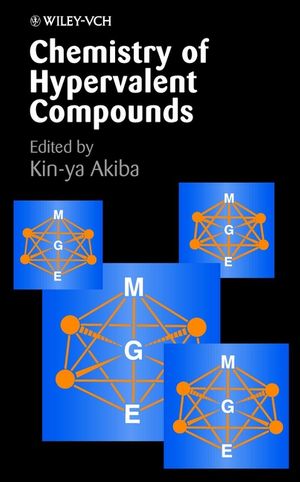Chemistry of Hypervalent CompoundsISBN: 978-0-471-24019-8
Hardcover
432 pages
December 1998
 This is a Print-on-Demand title. It will be printed specifically to fill your order. Please allow an additional 10-15 days delivery time. The book is not returnable.
|
||||||
Broad, comparative coverage of hypervalent compounds -a much-needed foundation in a rapidly growing field of chemistry.
Although hypervalency is already a mature field in chemistry, it has seen a new surge of interest in recent years due to the discovery of compounds useful in organic synthesis, as well as others with significant applications for materials science.
Now, this comprehensive book-written by a group of twenty leading experts in the field-provides an authoritative blueprint on the subject. Instead of focusing on compounds specific to one element, it presents a review of structure and reactivity among an extensive array of main group, organic, and organometallic hypervalent compounds. In so doing, the book offers essential information on underlying principles that unify seemingly unrelated families of main group element compounds.
An invaluable resource for both organic and inorganic chemists, Chemistry of Hypervalent Compounds includes:
* An overview of general aspects of structure and reactivity common among hypervalent compounds
* Information on such recently characterized organic compounds as silicon, phosphorus, sulfur, iodine, and xenon
* A review of new organometallic compounds with synthetic applications
* Solid background material on compounds important in advanced materials science, such as semiconductors
* A systematic approach using the N-X-L designation, where N represents the valence electrons of the central atom X, and L the ligands that bond the compound.
Although hypervalency is already a mature field in chemistry, it has seen a new surge of interest in recent years due to the discovery of compounds useful in organic synthesis, as well as others with significant applications for materials science.
Now, this comprehensive book-written by a group of twenty leading experts in the field-provides an authoritative blueprint on the subject. Instead of focusing on compounds specific to one element, it presents a review of structure and reactivity among an extensive array of main group, organic, and organometallic hypervalent compounds. In so doing, the book offers essential information on underlying principles that unify seemingly unrelated families of main group element compounds.
An invaluable resource for both organic and inorganic chemists, Chemistry of Hypervalent Compounds includes:
* An overview of general aspects of structure and reactivity common among hypervalent compounds
* Information on such recently characterized organic compounds as silicon, phosphorus, sulfur, iodine, and xenon
* A review of new organometallic compounds with synthetic applications
* Solid background material on compounds important in advanced materials science, such as semiconductors
* A systematic approach using the N-X-L designation, where N represents the valence electrons of the central atom X, and L the ligands that bond the compound.



